That was shared by Mr. Cao Hong Phong, Deputy General Director of Gemalink at the 2nd Vietnam Logistics Conference - 2024 organized by Dau Tu Newspaper on the morning of October 31.
Gemadept is determined to build a smart and green Port - Logistics ecosystem
That was shared by Mr. Cao Hong Phong, Deputy General Director of Gemalink at the 2nd Vietnam Logistics Conference - 2024 organized by Dau Tu Newspaper on the morning of October 31.
Over 34 years of steadfastly building an integrated Port and Logistics ecosystem stretching from North to South, Gemadept Joint Stock Company (code GMD - HoSE) continues to pursue the goal of sustainable development, building a smart and green Port - Logistics ecosystem. Gemadept is actively joining hands with the Government in realizing the Net Zero commitment by 2050 at the United Nations Climate Change Summit Cop 26.
In order to pursue the goal of sustainable development and build a green and smart port, according to Mr. Cao Hong Phong, Deputy General Director of Gemalink (a member unit of Gemadept), he shared: “For Gemadept, we have established an ESG Board, conducted an annual inventory of greenhouse gas emissions at Gemadept's ports, built a roadmap for emission reduction, developed Green ports, invested in modern, environmentally friendly equipment; converted to using electricity instead of diesel, increased the use of renewable energy; Seed for Sea afforestation initiative in Vinh Long or signed a contract with HSBC on a sustainable credit agreement. This is the next "Green footprint" in Gemadept's development plan and access to Green capital flows".
Furthermore, as a member of Gemadept's Port - Logistics ecosystem, Gemalink deep-water port is committed to protecting the environment, improving resource efficiency and minimizing negative impacts on the surrounding environment.
In particular, Gemalink Port achieved the ISO 14001:2015 Environmental Management System certification by Bureau Veritas Certification Vietnam. This is a testament to Gemalink's efforts in protecting the environment, while affirming its commitment to service quality and sustainable development.
It is known that currently, Gemadept in general and Gemalink port in particular have achieved significant progress in applying modern technology to port operations and exploitation. Typical applications are Smart Port applications - SmartPort, RiverGate, SmartGate and other advanced applications and software...
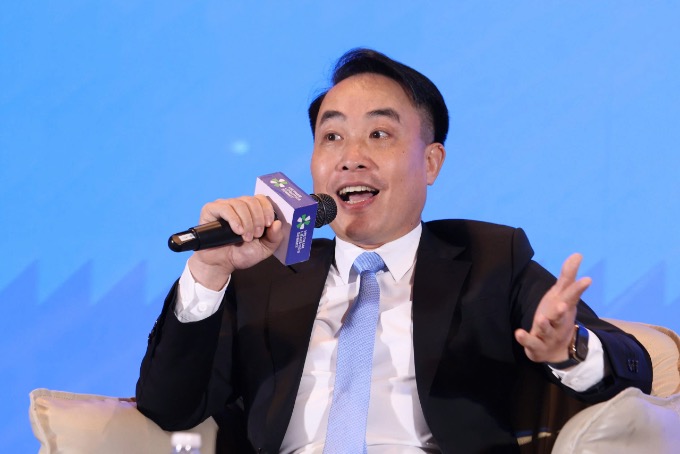 |
| Mr. Cao Hong Phong, Deputy General Director of Gemalink (Photo: Le Toan) |
The leaders of Gemalink port added that the above applications are not only tools for digitalizing transactions and automating processes, but also a testament to the Company's continuous efforts in enhancing operational efficiency, while bringing the highest values to customers and partners, making practical contributions to the digitalization process of the Port and logistics sector.
Demonstrating the sustainable development strategy and being recognized by partners and the market, on May 28, HSBC Bank (Vietnam) Limited (HSBC Vietnam) and Gemadept signed a sustainability-linked credit financing agreement. This financing agreement also marks the first sustainability-linked credit that HSBC has successfully arranged for a Vietnamese enterprise in the field of Port and Logistics.
Developing smart and sustainable ports requires the cooperation of many parties.
Besides sharing about the successes of Gemalink port in general and Gemadept in particular, in his position as the leader of a large port, Mr. Cao Hong Phong also gave his opinion on what businesses need to do to develop smart and sustainable ports.
Mr. Cao Hong Phong emphasized: “Developing a smart and sustainable port is a long process and requires businesses to have appropriate strategies, roadmaps and investments. In addition, businesses need support from the Government, agencies and the cooperation of relevant parties to achieve this goal.”
On the business side, businesses need to focus on building a roadmap that is suitable for the current situation, resources and sustainable development goals of the business. This is very important.
“I really appreciate the statement of Mr. Nguyen Manh Hung, Minister of Information and Communications, with the Ministry of Transport . The most important question about any project is whether it is effective, not whether it is big or small. Effectiveness means that spending 100 dong must bring back more than 100 dong. Smart ports or digital transformation is a new job and will be a very long and continuous process.
So, start with projects that after 1 year, or at most 2 years, must bring results and efficiency. These experiences will bring confidence in digital transformation and make bigger decisions. Always look at the value and efficiency that digital transformation projects bring. Be cautious with grandiose projects but with unclear results and efficiency," said Mr. Phong.
In addition, businesses also need to train a team of personnel who are aware of green development trends, have expertise in advanced technology, and have skills in managing and operating smart ports; invest in modern, environmentally friendly technology and equipment, and minimize emissions; build a corporate culture towards innovation, creativity and sustainability; strengthen cooperation and connection with stakeholders: the Government, management agencies, consulting units, and other businesses in the industry to promote the creation of a smart port ecosystem; participate in domestic and international associations: Participate in seaport, industry, and trade associations, etc. to update information, share experiences, and learn from best practices.
On the management side, businesses need support and facilitation from the Government and relevant agencies through policy support. These include reducing barriers, simplifying procedures, reducing fees and charges; tax incentives; financial support including preferential loans and financial support packages for businesses to invest in green transformation; and perfecting the legal framework to encourage green investment, creating a stable business environment.
In addition, management agencies also need to increase support for businesses in the Port - Logistics industry to build and develop green supply chains through developing connecting infrastructure, including strengthening port connections with other transport systems such as roads, railways, and airways to create an effective logistics network.
For example, public investment in the inland waterway sector (currently accounting for only nearly 2% of the investment budget but contributing up to 20% of transport output): dredging channels, increasing ship clearance... and implementing breakthrough model transport routes (such as the Cai Mep - Mekong Delta model transport route).
In addition, there needs to be policies and mechanisms to encourage ports to invest in developing smart and sustainable ports. In particular, adjusting port loading and unloading prices because they are still very low compared to the region and the world (about 50% compared to the average price of the region), helping ports have additional revenue to continue investing in digital transformation and greening seaports.
Gemalink Port Phase 2A is expected to be put into operation from 2026.
In fact, Gemalink deep-water port has a total wharf length of up to 1.5km, a total capacity of 2 phases up to 3 million TEU/year, can simultaneously receive 3 mother ships and 5 feeder ships, river ships coming in and out to handle cargo. In which, phase 1 of the port has been put into operation since the beginning of 2021, the port is located at the river mouth with the deepest draft and receives the largest ship size in the world today (up to 250,000 DWT).
 |
| Gemalink Port welcomes two mother ships |
Furthermore, since being put into operation in early 2021, Gemalink Deep-water Port has always been a bright spot in the Cai Mep - Thi Vai port area, a port cluster ranked by the World Bank as the 7th most efficient container port in the world in 2024.
“To promote the potential and advantages of the Cai Mep - Thi Vai port cluster, including Gemalink Port, and at the same time meet the growing needs of the market and partner shipping lines, the Company is completing procedures to soon start construction of Gemalink phase 2A, expected to be put into operation from 2026,” Mr. Cao Hong Phong revealed the time to put Gemalink port phase 2A into operation.
Source: https://baodautu.vn/gemadept-kien-dinh-voi-muc-tieu-xay-dung-he-sinh-thai-cang---logistics-thong-minh-va-xanh-d228840.html





![[Photo] Ready for the top competitions of Vietnamese table tennis](https://vphoto.vietnam.vn/thumb/1200x675/vietnam/resource/IMAGE/2025/5/18/9c547c497c5a4ade8f98c8e7d44f5a41)
![[Photo] Party and State leaders attend the special art program "You are Ho Chi Minh"](https://vphoto.vietnam.vn/thumb/1200x675/vietnam/resource/IMAGE/2025/5/18/6895913f94fd4c51aa4564ab14c3f250)
![[Photo] Many young people patiently lined up under the hot sun to receive a special supplement from Nhan Dan Newspaper.](https://vphoto.vietnam.vn/thumb/1200x675/vietnam/resource/IMAGE/2025/5/18/6f19d322f9364f0ebb6fbfe9377842d3)
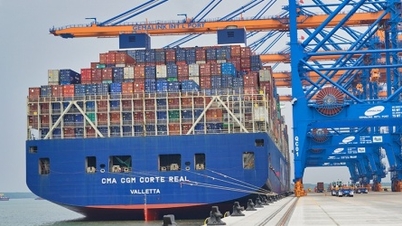
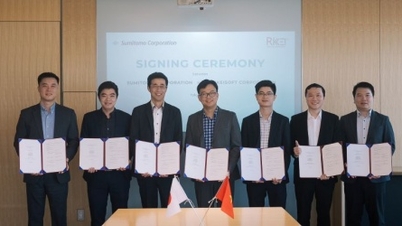
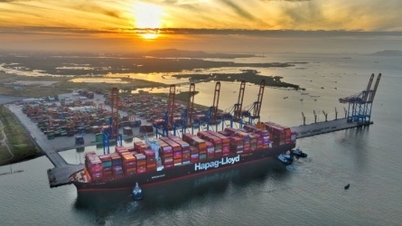




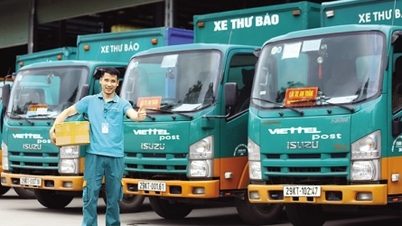






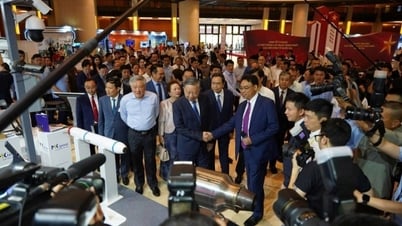

































































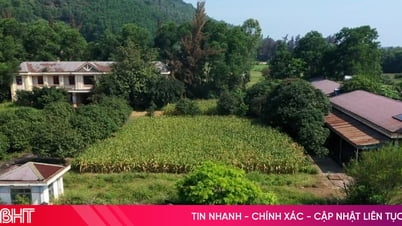











Comment (0)